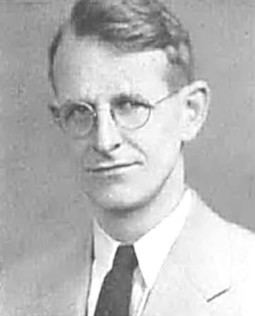Name Richard Goodwin Role Economist | Education Harvard University | |
 | ||
Died August 13, 1996, Siena, Italy Books Chaotic economic dynamics People also search for Vela Velupillai, Sukhamoy Chakraborty, Ansanus | ||
Richard M. Goodwin (February 24, 1913 – August 13, 1996) was an American mathematician and economist.
Contents
Background
He was born in New Castle, Indiana. Goodwin received his BA and PhD at Harvard, and he taught there from 1942 until 1950. He fled the United States during the McCarthy era, then taught at the University of Cambridge until 1979 and the University of Siena until 1984. He was the first non-Italian professor of economics at Siena. He described himself as "a lifelong but wayward Marxist", joining the Communist Party of Great Britain while a Rhodes Scholar at Oxford in the 1930s, and then its American counterpart when he got back to the States. He left after the announcement of the Molotov–Ribbentrop Pact.
Work
Goodwin worked on the interaction between long run growth and business cycles. His article on "matrix multiplier" was one of the earliest uses of the Perron–Frobenius theorem in economics, although his reasoning had an error that was diagnosed by Frank H. Hahn. He returned to the Perron–Frobenius theorem with his book on The dynamics of a capitalist economy.
Goodwin's interest in applying the theory of nonlinear systems to macroeconomics was sparked by Philippe Le Corbeiller, who taught applied physics at Harvard. Following an early suggestion of Le Corbeiller's, Goodwin characterized the business cycle as a non-linear self-oscillation. Goodwin credited Le Corbeiller with teaching him nonlinear dynamics, while Le Corbeiller credited Goodwin with the discovery of the "two-stroke oscillator".
Goodwin adopted the Lotka–Volterra equations for the population dynamics of a predator and a prey species as the basis of the "Goodwin model" (or "Goodwin's Class-Struggle Model") of economic growth. In his model, employed workers have the role of predators, as their wage demands squeeze profits and hence investment, causing a subsequent increase in unemployment. Another model, "Goodwin's Non-Linear Accelerator", is also a model of endogenous cycles in economic activity; the cycles do not rely on outside shocks or structurally unstable parameters. "A Growth Cycle" (1967) saw Goodwin utilise Volterra's equations to formalise Marx's theory of economic cycles.
Major articles
For more details on Richard Goodwin's professional contributions see:
1) Nonlinear and Mutisectoral Macrodynamics: Essays in Honour of Richard Goodwin. (ed. K. Velupillai), Macmillan, London, 1989.
2) “The Vintage Economist”, The Journal of Economic Behaviour and Organisation, Vol.37, No.1, Sep., pp. 1–31, 1998.
3) “Richard Goodwin: 1913-1996”, The Economic Journal, Vol. 108, September, 1998, pp. 1436–1449.
